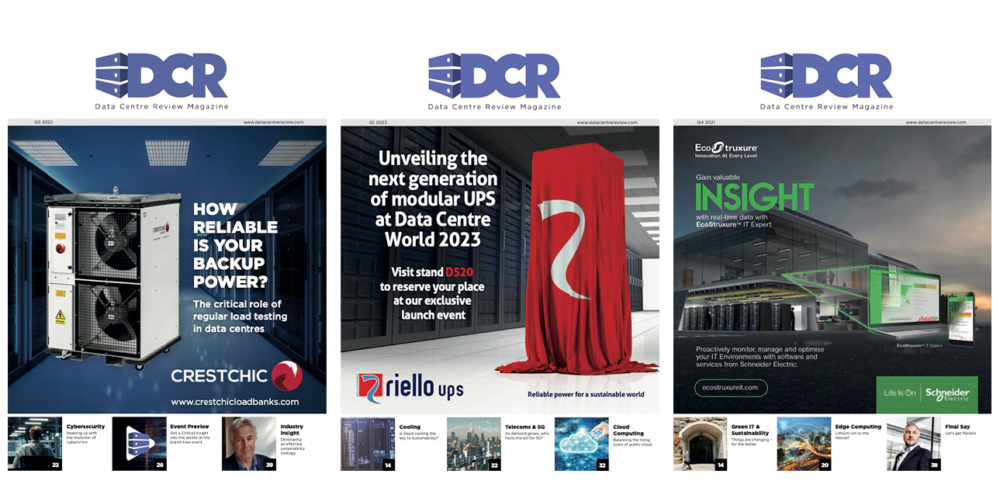Simon Harris, Director of Critical Infrastructure at BCS, makes the case that refurbishments, targeted electrical upgrades and smarter cooling can deliver speed-to-market, cost and carbon wins over new builds.
The data centre industry is entering a defining moment with AI no longer a buzzword but the backbone of digital transformation. This shift is reshaping not only what we build, but also where, how, and why we build it. The infrastructure that supported the last decade of growth is no longer sufficient as demand for capacity continues to accelerate, with no indication of slowing.
In response to this the EU is set to see its data centre capacity triple over the next five to seven years. As part of the ‘AI Continent’ action plan, the EU has launched a strategy to address Europe’s gap in AI infrastructure, bringing it to a level that enables it to become a global leader in AI.
If we look at the figures in real terms we can see that this is a highly ambitious target. The plan potentially means getting to 35GW of data centre capacity by 2030, driven mainly by AI requirements. This equates to the construction of an extra 25GW – effectively 5GW per year.
To put this into perspective, data suggests that across EMEA the industry will deliver around 1GW in 2025 – and that is of all types of facilities – so not all of this will be AI-ready.
The latest BCS independent survey confirmed that most data centre facilities aren’t yet ready for AI-heavy workloads and that the tech is coming faster than the infrastructure, with 85% of the 3000 respondents agreeing.
In simple terms, we are already behind.
The role of legacy data centres
Whilst all eyes are inevitably on building shiny, new facilities, the industry needs to accept that in order to achieve these targets, existing legacy facilities certainly need to be in the mix and action needs to be taken sooner rather than later before the gap between the ambitions and delivery widens further.
There are an increasing number of data centres operating with infrastructure that is over 20 years old, designed during a period when current technological advancements were not anticipated. These facilities now struggle to cope with the escalating requirements of modern computing, such as higher data volumes, faster processing speeds, and the need for robust cybersecurity measures.
However, with demand for AI-ready capacity showing no signs of diminishing, these facilities play a critical role in the continuing desire for global digitalisation.
There are a number of options available for developers, owners and operators ranging from a full refurbishment to decommissioning and rebuilding. Each option has its own challenges, all of which are influenced by cost implications, speed to market considerations and the sustainability agenda.
It is also important to understand what is possible with a site. Changes to cooling solutions will often mean some re-engineering of existing infrastructure alongside revisions to electrical systems to provide IT power enhancements.
Sites will often need to remain partially in service, requiring carefully developed installation plans. The presence of legacy defects arising from historic poor maintenance is a distinct possibility with building structural capacity requiring early investigation.
Supplemental utility power, if required, may need upfront applications and investment. All of these issues will need to be factored in whilst endeavouring to hit a price point that makes economic sense.
Rather than total rebuilds, many operators are adopting phased upgrades, pairing AI-ready modules or adjacent high-density segments alongside legacy systems maintaining continuity while upgrading capacity. Solutions like liquid cooling retrofits, enhanced containment and reinforced cabinets enable targeted enhancements in existing facilities.
Flexibility is vital as there needs to be a consideration of what may lie ahead for computing technology. For example, it would be very simple to assume that chip power consumption will continue to increase and require commensurately increased cooling – but this may not be the case if there were to be a technology breakthrough.
The roll out of quantum computing, whilst not likely in the very short term, will bring a radical change. AI workloads are ultimately going to go to quantum and currently available technology can’t compete. Quantum will undertake these workloads in a fraction of the time currently required and use dramatically less energy.
The benefits of retaining and upgrading
There is no doubt that retaining and upgrading existing stock has several advantages. Firstly, the journey through the commonly experienced risks of site clearance and new construction has already been travelled, they often have under-utilised power availability with consequential missed expansion and revenue opportunities.
Smaller former enterprise sites can be in good locations for inference workloads and there are savings to raw material resource utilisation and consequential carbon emissions when compared to new build.
In the built environment we still demolish too much and recycle too little. Speed to market can provide a competitive advantage.
In short, legacy data centres have an important role in meeting AI-ready capacity, complementing new build facilities as part of a pragmatic and necessary hybrid approach.



